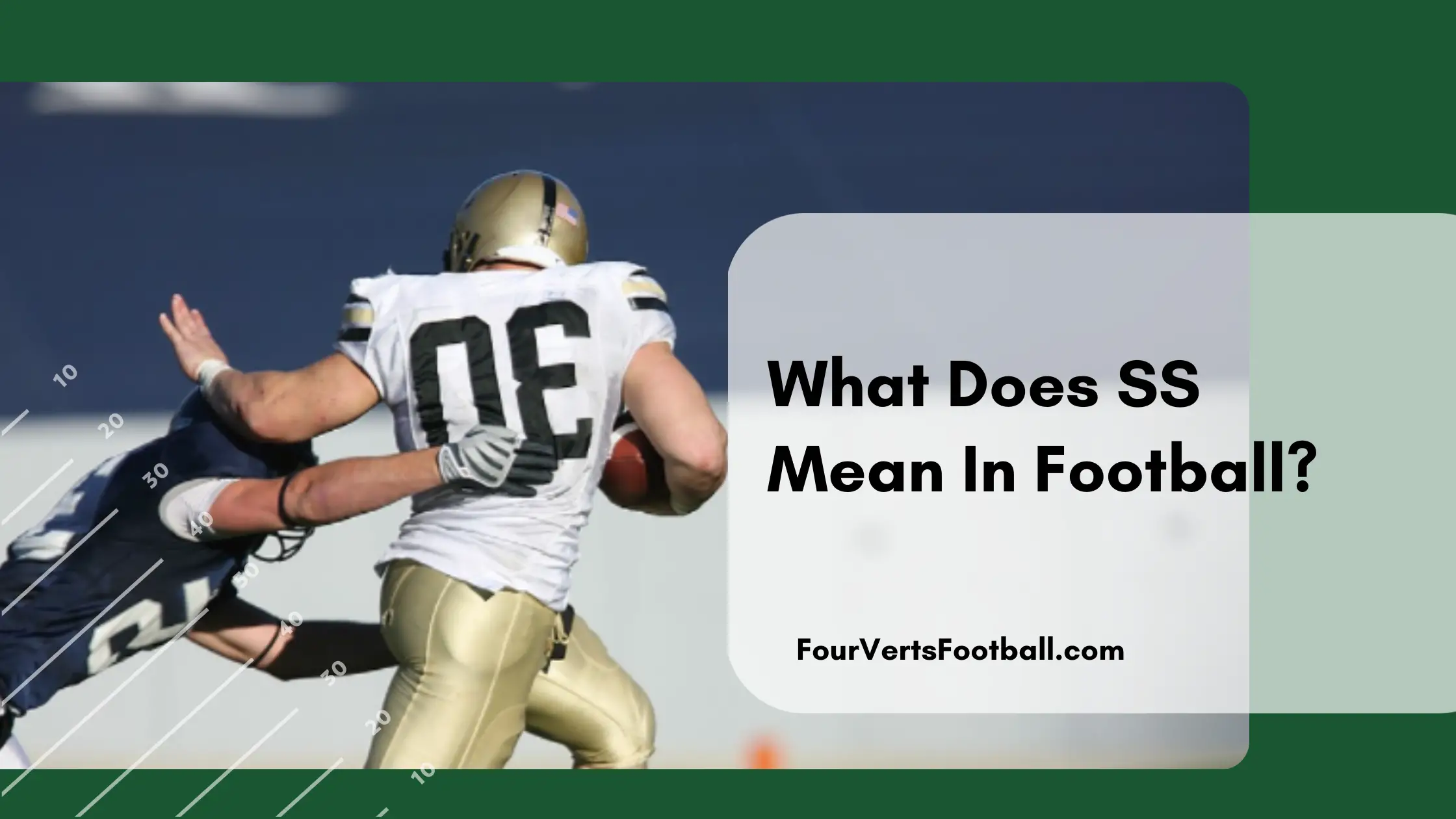The acronym SS in football refers to the position of strong safety. The strong safety is one of two starting safety positions and primarily lines up on the strong side of the formation.
The strong side of the formation refers to the side of the formation which has more players. Generally speaking, this is going to be the side that features the TE position.
Strong safeties tend to be a little bit larger than their FS (free safety) counterparts.
This is mainly due to the fact that they are more involved in the run game.
What does an SS do in football?
Now that you understand that SS stands for strong safety in football it’s time break down what they do on the field.
Below we will cover some of the major responsibilities assigned to strong safeties.
Covering the tight end
Since strong safeties are primarily lined up on the same side of the formation they are often matched up against the tight end.
This means on passing plays the SS will attempt to cover the tight end so that the quarterback is not able to complete a pass to him.
With modern-day tight ends playing a major role in NFL offenses the strong safety has become an important pass coverage position.
Stopping the run
Out of the two safety positions, the strong safety is going to play closer to the line of scrimmage.
For this reason, they are more likely to be involved in making tackles on rushing plays.
Additionally, football teams almost always run the ball towards the strong side of the formation.
This means that the SS is going to be on the side of the field the ball is primarily run to.
On these plays, the SS will have to fight through the blocks of tight ends and attempt to tackle the ball carrier.
This is another reason why strong safeties tend to carry more weight than free safeties.
If an SS is too light then it will be too easy for opposing tight ends to move them on running plays.
Deep coverage responsibilities
Many football defenses utilize cover 2 in pass coverage which involves both safeties playing a deep half of the field.
The safeties are kept there in order to stop any long passes from being completed.
A safety in this coverage should never let a player get behind him as both safeties are effectively the last man back on their side of the field.
That is all for the SS position in football to check out some other defensive position acronyms see our articles on DEs, or CBs in our position acronyms section.

